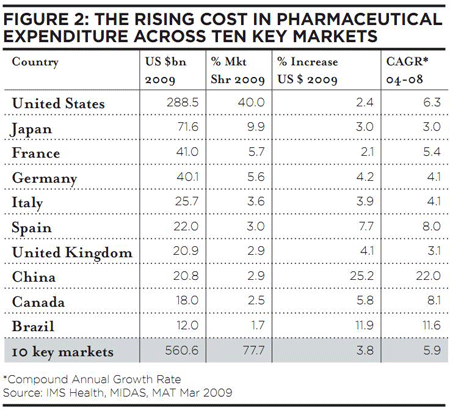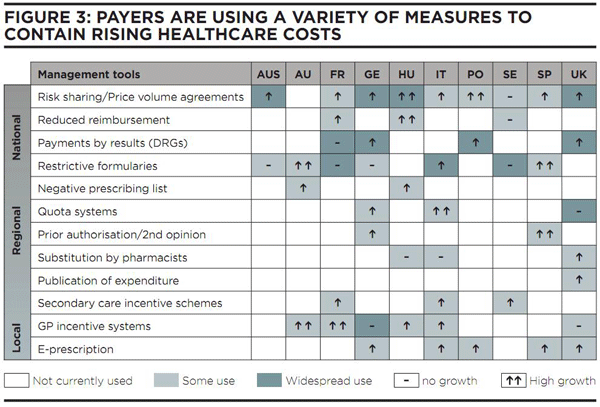Liz Coyle and Robert Dossin
Who will pay for our healthy longevity in a rapidly ageing world?
Ageing is probably one of the most widely discussed topics today. Whether it’s the hottest anti-wrinkle cream to fly off the shelf, the newest super food to keep our brains in gear, or the latest scientific research to be awarded the Nobel Prize – reminders of our declining years are everywhere. Except, they’re not so declining anymore.
No longer do we stop being active and productive once we hit 60. No more do we want to sit back and embrace the grey. Now the talk is of ‘silver start-ups’, exploring their entrepreneurial potential of living “like 50 until [we’re] 80 and beyond” and “watching who we call elderly”. Nor are we only behaving younger for longer; thanks to advances in science and technology, we are living longer too. It is a staggering thought that by 2050, the number of senior citizens in the world will have more than tripled to 1.5 billion, the number of individuals aged over 85 will have increased fivefold, and some 3.5 million people will have reached the age of 100 or more. Even sooner, for the first time ever, there will be more people aged 65+ years than children under the age of five.
But what is the price of our new-found longevity – and can we afford to pay it?
A CAUSE FOR CELEBRATION…
The fact that people are living longer and healthier lives is undoubtedly a major achievement and one that opens up many new possibilities for individuals approaching retirement. Moreover – and crucially from a commercial perspective – it is also fostering a powerful and rapidly expanding group of consumers who are able and determined to make the most of their senior years.
These new older customers are not only better educated and more open to new technologies than their parents were, but also show every sign of being more informed and more demanding of services, treatments and well-being options. For diverse industries – from medical devices, cosmetics and alternative therapies to housing, insurance and home care – ageing consumers as a decision-making force bring tremendous opportunities for growth. Already, their resolute focus on maintaining a healthy and active lifestyle is driving forecasts of a market for global anti-ageing products worth US $291.9 billion by 2015.
…OR CONCERN?
While few would question the value of improved longevity, most acknowledge that increased lifespan does not necessarily imply improved health span. Indeed, analysis of pharmaceutical use and life expectancy over the last five years shows that population ageing is more likely to result in higher rather than lower demand for healthcare.
Clearly, a much older world will be a very different world. A smaller workforce, likely a lower GDP growth, certainly a greater pension burden, and given the significantly higher medical costs associated with older citizens – estimated to be three times greater in the average person aged 65+ years versus those aged under 65 – the potential for much higher expenditure on healthcare.
Even now, the evidence is there: research from the University of California suggests that the baby boomers may well be entering their 60’s with far more physical disabilities than their predecessors; many older citizens are already living with long-term incurable conditions and the number with age-related illnesses is set to soar. By 2025, cases of disability are expected to have risen by 67%, dementia by 50%, stroke by 46%, and coronary heart disease by 42%. Significant increases in deafness, osteoarthritis and osteoporosis are also anticipated. Rising yearly total costs of sustaining health for the elderly have already been noted.
With fewer people of working age to support the increased demand for new medicines and diagnostic procedures, population ageing has the potential to cataclysmically change the future financing of care – not only in the developed nations but also in the emerging economies which are ageing at a faster rate.
For national payers already struggling to allocate finite resources, pharmaceutical manufacturers under pressure to deliver new therapeutic innovations, and patients determined to give themselves the best chance of ageing well, the cost implications of these trends are enormous.
FOOTING THE BILL: PAYERS
The accelerating pace of ageing comes at a time when healthcare systems in the majority of countries are already stretched to the limit. Drug innovations in recent decades may have transformed the ability to diagnose and treat diseases that primarily affect the elderly, but for governments and national healthcare payers, managing the consequent growth in costs is already a defining challenge. A planned 15% rise in the basic Medicare premium in the US reflects the soaring medical costs that have triggered the most dramatic legislative proposals in decades.
In spite of accounting for only about 10% of overall healthcare spending, the pharmaceutical budget has stood out as one of the easiest targets for cost-cutting efforts. Expenditure on drugs has been growing comparably across all the major Western countries (Figure 2). In emerging economies such as China and Brazil, significantly higher rates of growth have been observed, despite their smaller market share, spurred by expanding access to medicines in these countries.
Various measures to contain escalating healthcare expenditure are hitting hard in many nations (Figure 3). Among them, tighter reimbursement controls and higher co-pays are increasingly shifting the financial burden of prescription drugs to patients. In the US, over 85% of Medicare plans now incorporate Tier 4 pricing, requiring patients to pay a percentage of the drug bill for some of the highest-cost products; in France in 2008, the government delisted an entire class of drugs that were previously reimbursed at 15%; and in Greece more stringent coverage conditions are included in major proposals to curb excessive healthcare spending.
Globally, the use of health technology assessments, such as those conducted by NICE (National Institute for Health and Clinical Excellence), is also growing as payers become increasingly focused on determining value for money before granting market access. Some systems are also adopting pay-for-performance agreements, and, critically, most are now advocating the use of generics. In Japan, which has one of the oldest populations, the Ministry of Health has set itself an ambitious target of raising generic market share by volume to 30% by 2012.
As the impact of the ageing population starts to hit home with greater ferocity, issues of choice, affordability and access will only intensify, leading to questions as to how far authorities can – and will – go to curb further cost growth. Who will ultimately be expected to bear the biggest burden? Will they pay regardless? Where will the emerging markets look for guidance as they tackle their own cost issues? The outcome of US healthcare reforms is likely to be a defining factor. How far they will reach and how fast they will travel remain critical questions.
MEETING THE NEED: PHARMACEUTICALS
For the healthcare industry, population ageing has also begun to make its mark. Prolonged life expectancy in diseases previously associated with high mortality is extending the use of longer-term chronic therapies; there is now evidence to show that pharmaceutical consumption can delay or even prevent costly hospitalisation in some patients; and therapies to improve quality of life in terminal diseases are also playing a growing role.
While it could be argued that there are now gold standard treatments for the majority of illnesses, there is still a need for more innovation across the therapy areas addressing disorders of older citizens. Examples include better prevention and treatment of heart disease, therapies to delay or prevent the course of progressively degenerative conditions such as COPD or Type 2 diabetes, and improved treatments for disabling disorders such as Alzheimer’s or Parkinson’s disease.
Will an ageing population herald new opportunities and truly innovative medicines or prove the catalyst for further restraints and ever lower-cost care? It comes at a time of growing pressure for pharmaceutical manufacturers worldwide. Portions of the entire market in many countries are increasingly led by generic medicines, spurred by efforts to drive down cost.
Already facing exposure to generics in a number of key strategic classes and greater uniformity in pricing, companies are being challenged to find more sophisticated and creative ways of demonstrating added value. Will they be forced into new ways of innovating? Will the imperative to balance efficacy with affordability require a move into non-traditional areas such as new platforms, devices, diagnostic testing, and other treatment support? Could it signal the emergence of a new, open-ended model of integrated resources and partnerships with health organisations? Will it, in fact, completely redefine the entire business of pharmaceuticals?
CREATING THE DEMAND: PATIENTS
Already a proven force for change in matters of coverage and reimbursement, patients are fast becoming a potent, knowledgeable and engaged consumer base. And not only the younger ones. According to research from the US Center for Studying Health System Change, nearly 40% of patients aged 65-74 years, and over 30% of those aged 75 years and over now take a proactive approach to managing their health and healthcare. The number of individuals aged 65 years and over who actively seek health information from sources other than their GPs has also been rising – from 31% in 2001 to nearly 48% in 2007 – while the proportion of seniors using the internet for this purpose has more than doubled to 18%. Similar trends are also taking place in Europe. Even in emerging regions like South America, there is evidence of changes in the habits and attitudes of senior citizens in relation to their health.
Increasingly informed and empowered patients are voicing their displeasure and demanding their rights around a spectrum of healthcare issues. In Europe, so-called ‘health tourism’ is increasing as patients utilise cheaper medical treatment in some of the newer EU countries. Even in the traditionally conservative UK, they are openly critiquing their primary care service in online NHS forums, marking a major departure from traditional perceptions of the GP/patient relationship.
As their enforced contribution to healthcare financing continues to rise, patient choices around branded, generic or OTC products will be increasingly important – as will their willingness to pay. A recent survey from RAND Health identified a clear correlation between increased cost-sharing and reduced drug use, particularly for chronic conditions; a doubling of co-pays was found to trigger a cutback of 25%-45% across eight common drug classes.
The full extent of patient influence remains to be seen. How far they will be prepared to go – and in which direction – remain critical questions. Regardless, their changing profile as smart, connected consumers cannot be ignored. The removal of traditional borders, exacerbated by the internet, creates tremendous potential for global outreach to the broader community of patients but understanding the opportunities and researching the audience will be essential.
IMPERATIVE FOR ACTION
The challenges of an ageing population raise important issues regarding the preparedness of existing healthcare resources to maximise the health and wellbeing of senior citizens. Already there are signs of disparate access to treatment in Europe, reflecting different approaches to managing the demand for care. As payers continue to push back on rising costs and patients become increasingly assertive, all parties will need to find new ways of working towards the common goal of living longer successfully.
How will this be achieved? Pre-emptive plans are essential; policies, programs and reforms will need to be geared towards greater levels of chronic illness, higher disability rates and long-term care. Nations at an earlier stage in the process must look to existing analogs to improve their healthcare investments for an ageing population. Now is the time to harness the information and identify the research needs that will be key to achieving more rational choices and ensuring that priorities are aligned to an older, healthier future.
Liz Coyle is general manager of Commercial Research, and Robert Dossin is VP of Marketing for Europe, the Middle East and Africa at IMS Health.





